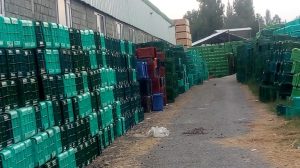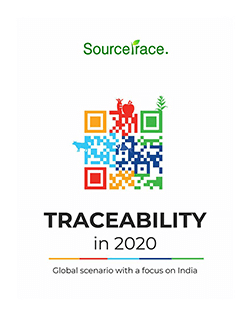Food Packaging : Safety, Convenience and Appeal

Not all food can be bought fresh off the producer’s or vendor’s shelves. Look around the grocery stores and supermarkets – you will find that every food product has its own type of packaging. A trip down the aisle in the supermarket is good enough to take note of that. In fact, even items that we consider ‘fresh food’, such as fruits and vegetables, at times end up packaged for convenience and standardization.
Part of the purpose of packaging is preservation. But preservation methods, as such, are not new. Go back a couple of generations, and you will recollect our grandmothers handling raw food like milk, vegetables, fish or meat in a way to extend their shelf life. These were done through drying, fermenting, curing, or even preserving in vinegar. Today we are in the era of commercial sterilization of canned foods, opening up the path to safe food products with prolonged shelf lives.
The purpose of food packaging
Food packaging serves multiple purposes: it protects food from getting contaminated or spoilt, makes the package look attractive, literally ‘speaking’ to a potential buyer, and enables the transportation of goods. Packaging retains the freshness of the product and prevents it from exposure to chemical or biological contamination. So, right from source to consumer destination, packaging retains the physical integrity and visual appeal of the product.
Irrespective of what items the packet may contain, packaging comes with labels and other important consumer information that helps the consumer select products. Packaging traces food through production, processing and distribution phases – this, in turn, ensures quality and safety. So, food packaging is essentially the science of making the items look appealing to the customer while keeping it fresh and easy to eat.
Another important purpose of packaging, though less apparent, is portion control. Creating standardized portions helps to regulate usage. For example, bulk commodities like salt can be divided into packages that are a more suitable size for a household. The packaging also helps keep track of inventory, like selling sealed bottles of milk, rather than have people bring their own bottles to fill themselves.
Packaging materials
Food packaging uses a variety of materials: plastic, paper, and cardboard, aluminum, jute, cloth, glass, and others. Various packaging materials protect food from different types of exposure – sunlight, gases, and moisture. A packaging material made of glass and metal protects food from pathogens and chemicals. Biological packaging materials include paper, cardboard and cushioning materials, which prevent food from being dislodged and getting crushed during packing, transport, and shelving.
Frozen Foods: One of the commonly used methods for packaging food is freezing, which can be done is a variety of ways. Both processed, ready-to-fry/eat foods, as well as vegetables like green peas and corn can be freeze-packaged. Frozen foods need to be packaged in airtight bags to keep them fresh and tasting good.
Consumer demand and packaging strategies
Consumers today are not satisfied with safety alone but are also demanding nutritious and tastier foods. By and large, the packaging industry’s experience has been that heat-processing sterilization is not the answer. Rather, practices should be towards minimal processing strategies, where foods are not subjected to the high temperature so that it tastes fresh and good. Here, antimicrobial food packaging plays a key role. We are at a time where the development of newer materials and incorporation of bioactive compounds in the packaging films have brought about a revolution in the food industry. There are also advanced techniques for the detection of emerging and resistant food-borne pathogens. Once the microbial risk for each type of food product is known, and microbial targets precisely identified, it is possible to determine what bioactive compound will be more suitable for each specific application.
In this sense, bacteriocins such as nisin or pediocin are being considered for the active packaging of food, while newer compounds are also coming into the picture. Besides, there are also other bioactive plant-derived natural products, as well as advanced elements derived from nanotechnology for specific food packaging applications. Not all these active compounds have been approved by the regulatory agencies yet. But it has triggered intense research and development in this novel area, which is sure to generate exciting advances and would hopefully fulfill consumers, administration and industrial requirements alike.
Reducing and recycling food packaging
Today’s packaging industry is also focusing on sustainable packaging, through reducing and recycling packaging materials and processes. This has been triggered on account of government regulations, consumer pressure, retailer pressure and cost control. Overall, it has been found that
“small local retailers produced less packaging and more that could be recycled, than larger supermarkets”,
according to a study by the British Market Research Bureau.
Trends in food packaging
One aspect that industry associations agree on is that the use of smart indicators in food packaging will increase. There are different types of indicators with different benefits to food producers, consumers and retailers. Next, digital temperature data loggers will come into use, to measure and record the temperature history of food shipments. This data can be downloaded and analyzed, through which the remaining shelf life of the product can be determined. In the case of temperature extremes, corrective measures can be taken. Barcodes are applied to food packaging to ensure that products are correctly packaged and date coded.
Food safety and public health
For the packaging industry, food safety comes first; and it is critical to maintaining food safety during processing, packaging, storage, and logistics, including cold chain, until the final stage of sale and use.
With regard to food safety, country-wise regulations apply, such as the US Food and Drug Administration (USDA) regulations outlined by the US Department of Agriculture. Other regulations are regional in nature, such as those issued by the European Food Safety Authority.
Food packaging considerations may include the use of hazard analysis and critical control points, verification and validation protocols, Good manufacturing practices, use of an effective quality management system, track and trace systems, and requirements for label content. As a critical step, health risks of materials and chemicals used in food packaging need to be carefully controlled. Carcinogens, toxic chemicals, mutagens, etc. need to be eliminated from food contact and potential migration into foods.
SourceTrace's software solutions have been deployed across 37 countries and 4 continents already. We are on a mission to make agriculture and food systems more sustainable. Get in touch and we will extend our expertise and commitment to you.
Request a Demo


